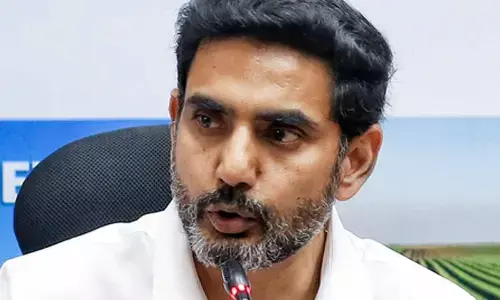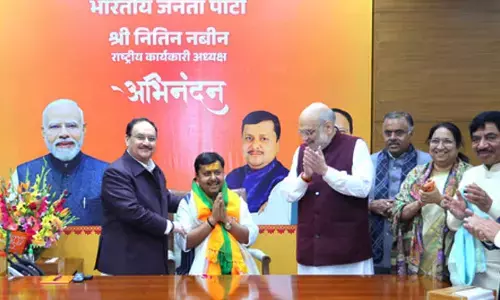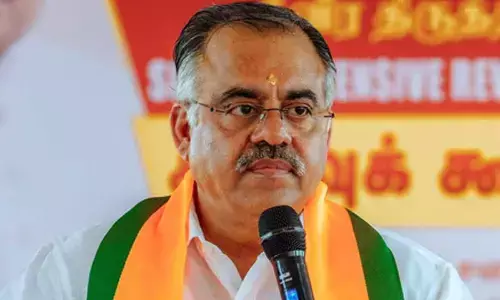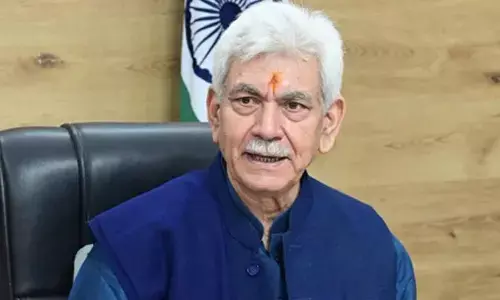There are many merits in Direct Benefit Transfer

Prime Minister Narendra Modi announced a 20-lakh crore Atma Nirbhar Abhiyan scheme to provide succour to the nation at the time of corona pandemic
Prime Minister Narendra Modi announced a 20-lakh crore Atma Nirbhar Abhiyan scheme to provide succour to the nation at the time of corona pandemic.
One of the important components of it is Pradhanmantri Garib Kalyan Yojana with an outlay of Rs 1.7 lakh crore which focuses on transfer of funds to the most vulnerable through direct benefit transfer . In fact criticism of Atma Nirbhar Abhiyan by some is that this component should have been much bigger.
This program as such covers wide variety of vulnerable groups right from farmers to agricultural labourer ,construction workers to frontline warriors who are fighting the corona pandemic on the field.
There is a provision for provision of free food grains benefiting about 80 crore of people with additional provision of rice and wheat and pulses free of cost. Cash transfer of 6000 rupees to the farmers is proposed.
Enhancement in pensions , free cylinder delivery for about three months, direct cash benefit transfer to women under Jan Dhan Yojana, provident fund contributions being paid by the government for labour both in the organised and unorganised sector is also part of the scheme.
Medical insurance scheme to provide insurance cover of 50 lacs to the front line workers fighting corona pandemic premium being paid by the government is also part of the scheme. Already an amount of Rs 53248 cr is transferred under the scheme to benefit about 42 crore beneficiaries.
In terms of its reach to the segments of population likely to be most vulnerable to the lockdown and the effects of the pandemic the scheme is very impressive. Whether the package could have been substantially more under this segment of Atma Nirbhar Abhiyan is a matter for debate.
Covid pandemic struck India at a time when economy itself was slowing . Any fiscal stimulus of a higher proportion can have serious inflationary pressures especially at a time when the economy is not doing well.
Keeping those considerations in view I feel the government has done an excellent balancing act by restricting the direct benefit transfers to the most affected and the most vulnerable groups. With reference to the other segments of population the focus was on stimulating the economy and ensure it comes back on track so that employment opportunities open up faster.
Comparison with developed countries and their packages is neither here nor there. With zero or negative inflation the focus of those countries even without a pandemic like this is more on stimulating demand and purposefully work for higher rates of inflation.
Hence in those countries with reference to their peculiar circumstances the focus was different. The package was different. Further as pointed out by Gurumurthy in one of his articles the pandemic is not behind us. We may still have to keep our powder dry to use it at a later date.
Such a massive transfer of funds to the vulnerable and needy at such a short time would not have been possible but for the financial inclusion steps taken up in the last 5 to 6 years in terms of Jan Dhan Yojana accounts.
Now that the necessary infrastructure is in place both in terms of the bank accounts and technical infrastructure direct benefit transfer should be preferred to other modes and schemes to reach the vulnerable sections of population.
This would help in plugging the leakages in the implementation of most of our government programs. MGNREAS funds can also be transferred as an income support measure to the vulnerable groups who are seeking employment.
There are two advantages that can come out of redrawing the scheme as a direct benefit transfer instead of a public works programme. Since the shelf of projects at village level are very limited they are getting exhausted fast.
Taking up of further public works under the scheme can be a problem. Since the scheme is operational all round the year farmers are facing severe labour shortage during peak periods of sowing and harvesting due to implementation of the scheme.
If the amount is given as a direct benefit transfer the income levels of the most vulnerable group will go up. The labour force will also be available all through the year meeting one of the major grievances of the farmers.
In fact in Central budget of 30 lakh crore and more is for subsidies, fertiliser ,food and petroleum. Is it not time to get a thorough analysis done to convert most of the subsidy as direct benefit transfer to the targeted groups and if possible in the process make some savings to the exchequer.
Subsidy administration and disbursement leads to building up of vested interests and certain levels of inefficiencies in administering them.
Direct benefit transfer would help the targeted groups by eliminating these inefficiencies and vested interests and properly worked out can be a win-win situation of saving part of the resources and ensuring benefits directly reach the targeted groups.

















